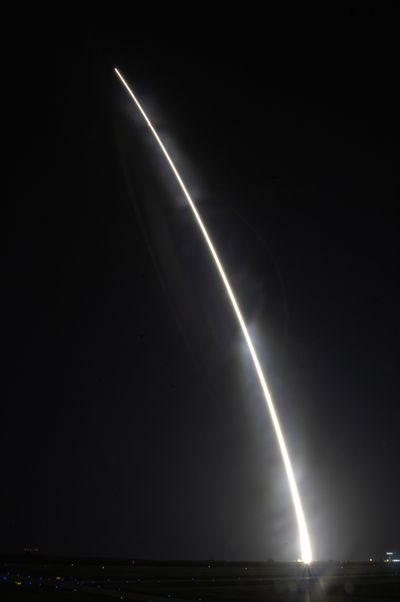Satellite crashes after launch
Craft set to monitor carbon dioxide

A NASA satellite designed to measure greenhouse gas emissions and pinpoint global warming dangers crashed Tuesday after a protective covering failed to separate from the craft shortly after launch at Vandenberg Air Force Base in California.
The loss of the $278 million satellite came as a severe blow to NASA’s climate monitoring efforts, as well as the builder of the Orbiting Carbon Observatory, Orbital Sciences Corp. of Dulles, Va.
“Our whole team, at a very personal level, is disappointed,” Orbital Science’s John Brunschwyler said at a briefing just hours after the satellite plunged into the ocean near Antarctica.
Launch director Chuck Dovale said the failure was a reminder that “even when you do your best, you can still fail.”
NASA and Orbital Sciences began an immediate investigation. Early indications pointed to a problem with the faring, the clamshell device that shields the satellite during liftoff from the high heat caused by air friction.
The faring is designed to fall away about three minutes into the flight, when the rocket reaches an altitude at which the air is too thin to harm the satellite. Evidence from telemetry received by ground operators suggests the faring never separated. With the extra weight, the satellite could not reach orbit, the science team said.
The first evidence that something was wrong came shortly after the 1:55 a.m. launch, when the ground controllers noticed that the rocket failed to record a jump in acceleration in the two-stage Taurus XL rocket that would have been expected when the heavy faring was shed.
The 966-pound satellite was supposed to be placed in an orbit 400 miles above Earth, where it was designed to spend two years measuring carbon dioxide emissions, the principal gas blamed in global warming.
Climate scientists were hoping the Orbiting Carbon Observatory could tell them whether current voluntary worldwide efforts to control carbon dioxide emissions are beginning to work.
With Tuesday’s failure, NASA managers said they would study the situation before deciding whether to build another carbon observatory.